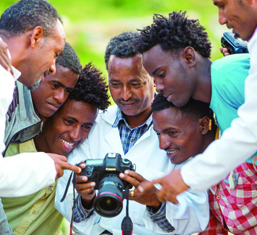Travelling through western Maharashtra recently, I could not help but notice the contrast between the villages here and those in the eastern belt of Bihar and Jharkhand. A greater variety of crops, abundant fields, and progressive farming practices – the differences were many. I was told that my first impressions may not hold true for the entire state, but certainly do for the belt containing the villages of Adhegaon, Alegaon, and Chandaj (Adhegaon cluster). This region has a long history of vegetable cultivation. Moreover, various private companies selling seeds, fertilizer, fungicides, and the likes often conduct demos in this area – making farmers here pioneers in adopting new inputs. But is that all, I asked myself? Through field interactions, I learned that there was more to the success than obvious – collective action was an important facilitator. The farmers in these villages form a close-knit community with regular (and transparent) information sharing amongst each other. For farming, they have formed a WhatsApp group on which they exchange information on what crops to grow, what seeds to buy, what fertilizers to use, and how to harvest. In the dense maze of private companies and the government selling/promoting a variety of inputs, often this peer learning WhatsApp platform helps in reducing the information clutter. When it comes to selling, these farmers normally patronize with specific traders, sometimes aggregating produce with a small group of other farmers. Farming in this cluster is a profitable business but has the potential to increase farmer’s income even more – especially the smallholders.With funding from the British Asian Trust, Digital Green is leading the implementation of the LOOP project in Maharashtra, in partnership with Mann Deshi Foundation. Through this, participating farmers can:
-
- aggregate produce more effectively by including a larger number of farmers, and therefore greater quantities of the crop for sale
- access newer markets that could potentially help them earn more with the same produce
During my time in the village, I saw farmers growing bananas, pomegranates, okra, watermelon and most magnificent of all – marigold. With the festive season right around the corner, marigolds were in full bloom, ready to flood the markets. 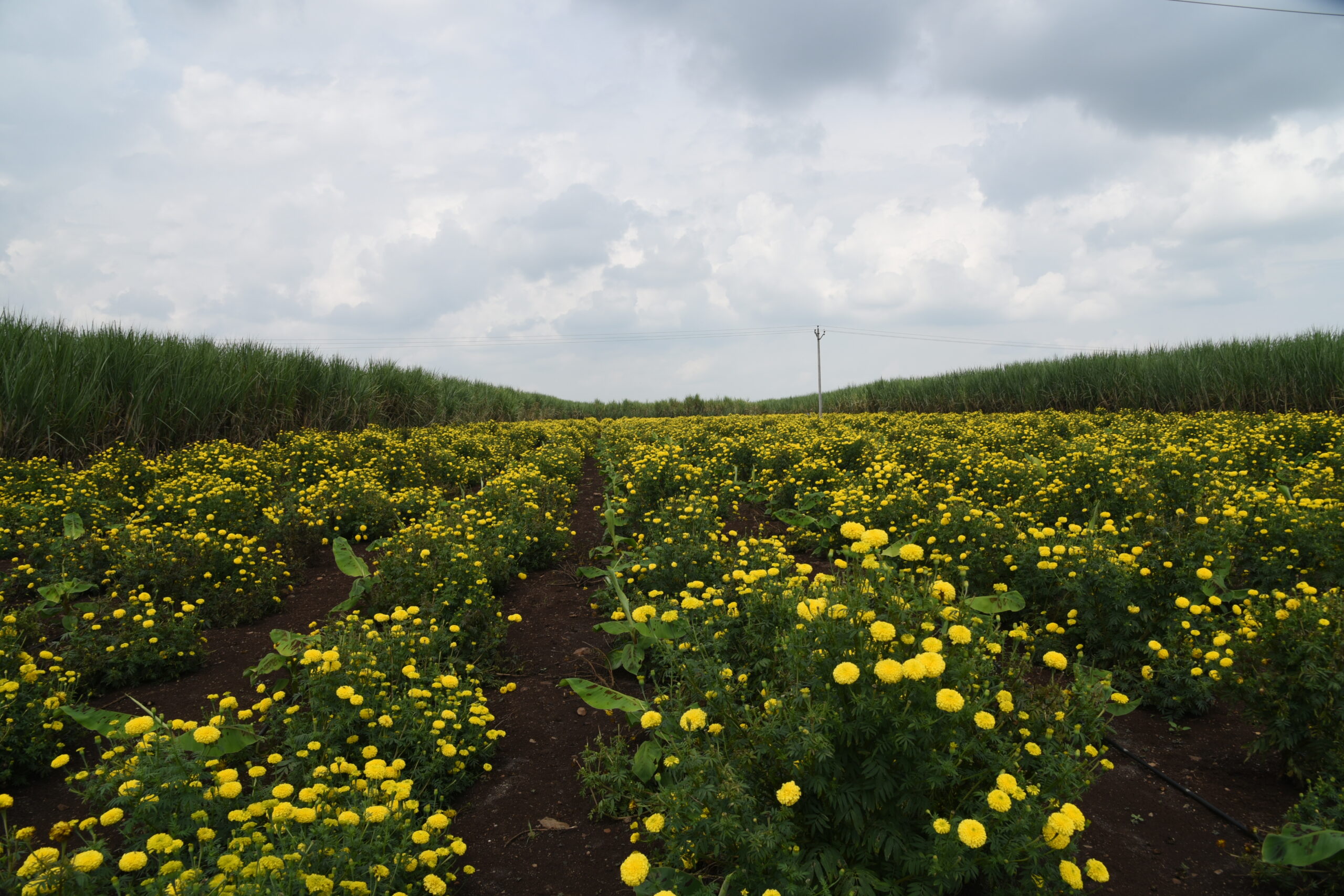 At that time the price of the crop increases from INR 10 per kg to about INR 100 per kg, making it quite lucrative for farmers. The price, of course, depends on the market, and the key to realizing a good profit is information on the rates in different markets – and this is exactly what the LOOP app facilitates. I learned that before being part of the LOOP project, farmers normally went to the Pune flower market where they got a rate of about INR 45 – 50 per kg during peak season. This is almost half of their INR 80 per kilo earning from a four-day sale of flowers in Mumbai through LOOP. With an additional net profit of INR 350,000 from the sale, farmers were more than thrilled to be a part of the program. In fact, one among those farmers chose not sell his flowers with the others, and realized a price of INR 45 per kg only, losing out on the additional profit. From this experience, now these farmers are tapping markets for other crops they grow. Recently, they made a sale of inferior quality raw bananas in one of Mumbai’s chips making value chain, instead of the Panghat market where they usually went.
At that time the price of the crop increases from INR 10 per kg to about INR 100 per kg, making it quite lucrative for farmers. The price, of course, depends on the market, and the key to realizing a good profit is information on the rates in different markets – and this is exactly what the LOOP app facilitates. I learned that before being part of the LOOP project, farmers normally went to the Pune flower market where they got a rate of about INR 45 – 50 per kg during peak season. This is almost half of their INR 80 per kilo earning from a four-day sale of flowers in Mumbai through LOOP. With an additional net profit of INR 350,000 from the sale, farmers were more than thrilled to be a part of the program. In fact, one among those farmers chose not sell his flowers with the others, and realized a price of INR 45 per kg only, losing out on the additional profit. From this experience, now these farmers are tapping markets for other crops they grow. Recently, they made a sale of inferior quality raw bananas in one of Mumbai’s chips making value chain, instead of the Panghat market where they usually went.
Despite this success, the experience in the Adhegaon cluster raises some critical questions. Are these simply some preliminary windfall gains – just a matter of chance? Or can farmers maintain a consistent increase in their income? If yes, who will ultimately bear the burden of the rise in prices? What if the aggregator or transport provider, in the long run, becomes another middleman in the market? Will grading improve the farmers’ chances to increase their incomes even further? What additional value-added services can help these smallholder farmers? Can we digitalize payments so as to reduce financial risks in large transactions? These are some important questions that Digital Green is working on. While the long-term success of the project is still to be proven in Maharashtra, the Adhegaon cluster is certainly showing a positive impact in the short term.
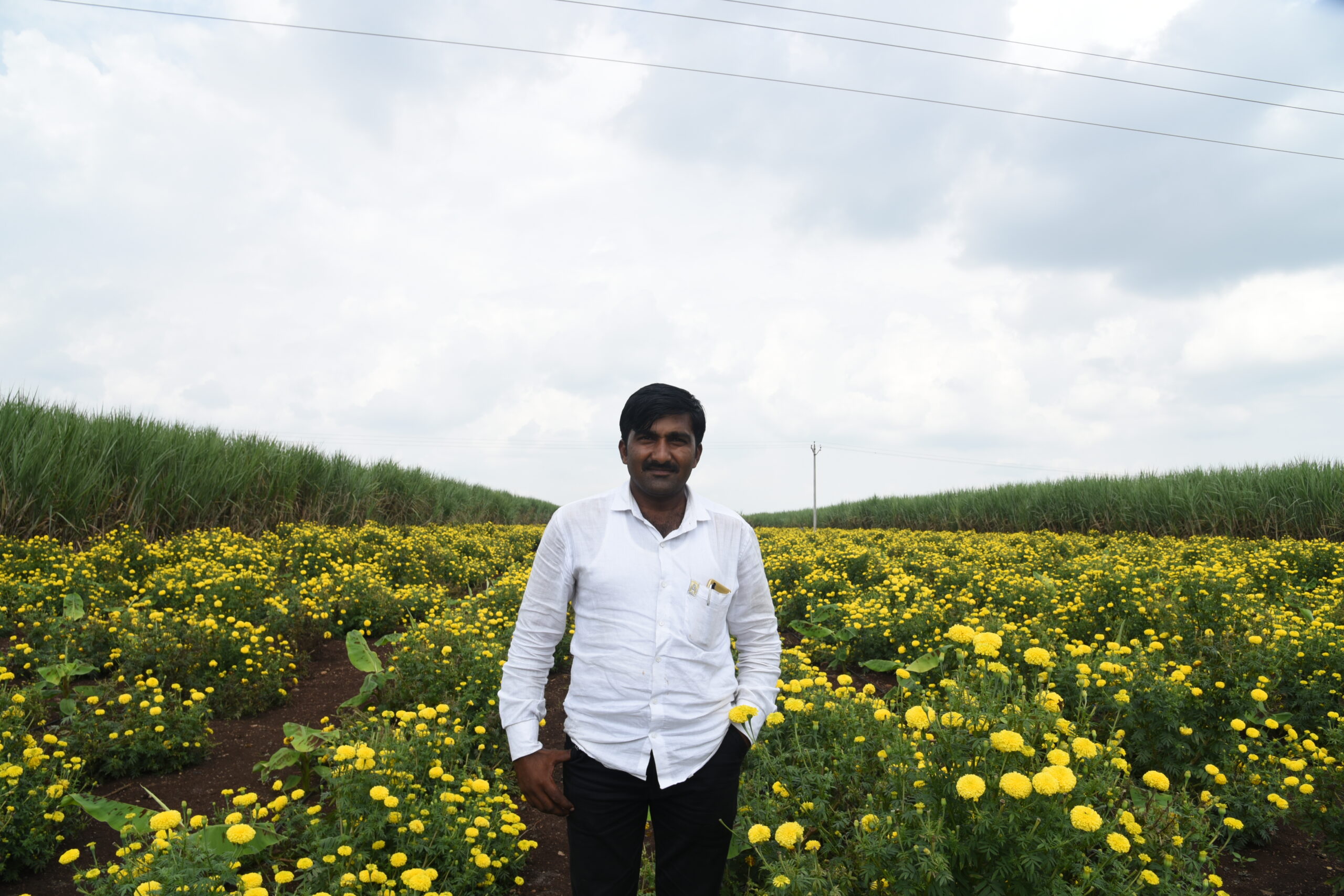
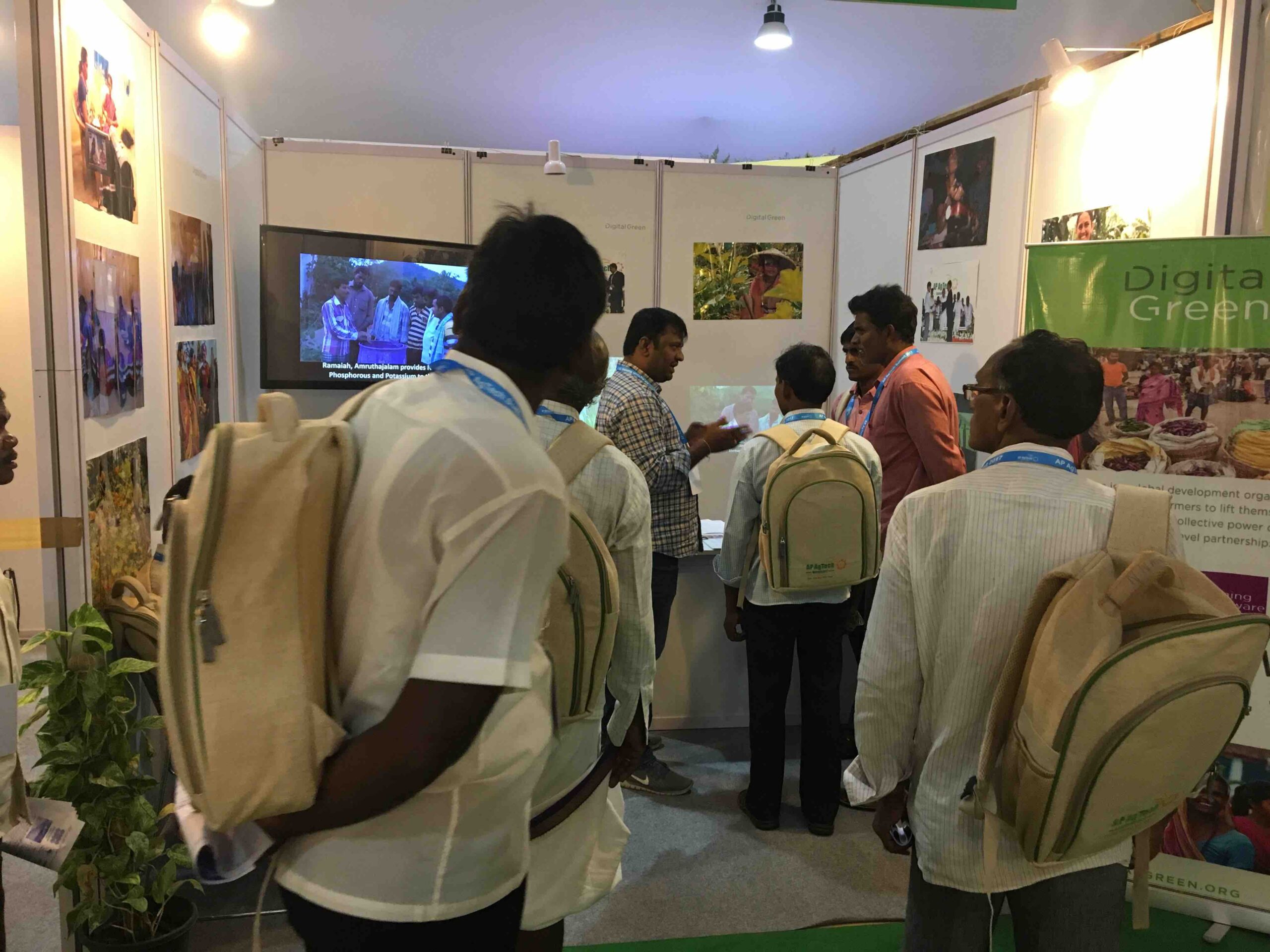
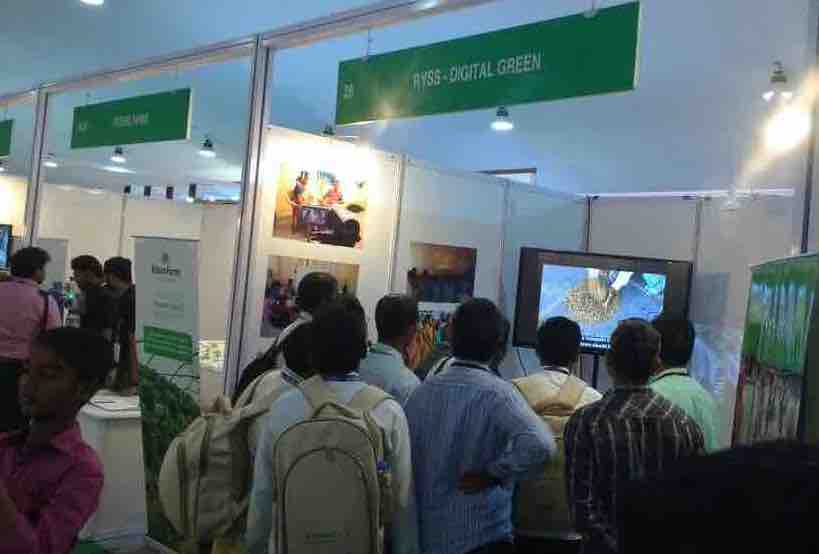 Another farmer M.V. Subba Rao from East Godavari district has been looking for literature and relevant information on zero-budget natural farming and pointed out that Digital Green extension system will be helpful to farmers in his community. Gundra Ambayya, a smallholder farmer from V.Kothapalli village in East Godavari district requested that we transfer the videos on natural farming methods onto his mobile phone – which we did with pleasure. While watching a video on natural farming method for cultivating tomatoes, one farmer asked us “Why did they put a stick as a support for the tomato plant?” He wanted to watch more such videos on vegetable cultivation. Many Agriculture Sciences students were also fascinated by the videos and agreed that it’s a good way to reach many farmers.
Another farmer M.V. Subba Rao from East Godavari district has been looking for literature and relevant information on zero-budget natural farming and pointed out that Digital Green extension system will be helpful to farmers in his community. Gundra Ambayya, a smallholder farmer from V.Kothapalli village in East Godavari district requested that we transfer the videos on natural farming methods onto his mobile phone – which we did with pleasure. While watching a video on natural farming method for cultivating tomatoes, one farmer asked us “Why did they put a stick as a support for the tomato plant?” He wanted to watch more such videos on vegetable cultivation. Many Agriculture Sciences students were also fascinated by the videos and agreed that it’s a good way to reach many farmers.
